Instead of focusing on one plant this week, I’d like to share photographs from my September 12 visit to Mike Delaney’s prairie in Dallas County. Mike’s property has provided source material for lots of Bleeding Heartland posts over the years, most recently this summer’s features on showy tick trefoil and starry campion.
Every time I explore the area, I find something I hadn’t seen before. You’d never guess this land next to the Middle Raccoon River was in corn and beans for decades before Mike spent about 25 years restoring the prairie.
GRASSES
I wasn’t able to capture the full landscape, but the prairie grasses were thriving despite this dry summer in central Iowa.
A closer look at some Indian grass blooming.
SUNFLOWERS
I searched in vain for the prairie sunflowers I’ve seen in past years on Mike’s prairie. Probably I was a little too early for them. The Maximilian sunflowers were having a banner year, though.
Many of the flowerheads were past their prime.
Some flowerheads had lost all of their ray flowers.
I’m not sure what this plant is, but John Pearson of the Iowa Department of Natural Resources thought it might be a young ox-eye (false sunflower) blooming later than usual.
ASTERS
Even professional botanists can find it challenging to identify white asters with yellow centers. I think these are heath aster, but I would not swear by that. They don’t have the long branches that are typical for frost aster.
I thought these plants were sky-blue asters, but some characteristics suggest they are smooth blue asters. Next time I visit Mike’s prairie, I will feel the leaves to see if they are rough or smooth (one trick for distinguishing these closely related species).
New England asters were abundant in one area of the prairie. These plants have dark yellow disk flowers in the center. The ray florets are usually purple but can be pink.
Some other plants in the aster family had finished blooming long ago. Seedheads of yellow or gray-headed coneflower:
MILKWEEDS
Mike has lots of common milkweed, butterfly milkweed, and whorled milkweed on his prairie. All finished blooming weeks or months ago. Here are some seeds emerging from a pod on a common milkweed plant.
Butterfly milkweed seeds beginning to take flight:
I forgot to take pictures of seed pods developing on the whorled milkweed.
GOLDENRODS
Like many wildflower enthusiasts, I have trouble distinguishing goldenrods. This may be Canada goldenrod. Near the upper right corner, some seedheads of gray-headed coneflower are visible.
Stiff goldenrod is distinctive, and Mike has a lot of it on his prairie.
More stiff goldenrod:
A picture of elm-leaved goldenrod is enclosed near the end of this post, along with other woodland wildflowers.
GENTIANS
I missed the peak blooming period for gentian species, but many plants still had flowers. I’ve never seen so much cream gentian on Mike’s prairie. He told me later he has tried to spread the seeds over a wider area each year.
With one of those mystery asters:
Mike has quite a few bottle gentian plants too.
The black seedhead in the foreground here is a pale purple coneflower that bloomed a couple of months earlier.
Many gentian flowers never fully open, but downy gentian is an exception.
ASSORTED PRAIRIE WILDFLOWERS
Compass plants typically bloom in July. Even without the bright yellow flowerheads, these plants are striking.
Most thistles you see in Iowa fields or roadsides are invasive species, but Mike has some native thistles on his prairie. I believe these are tall thistle:
Rattlesnake master mostly blooms in July and August. These plants were past their prime:
Prairie sage, also known as white sage or silver sage:
Round-headed bush clover in the foreground, with some kind of goldenrod near the upper left corner:
I didn’t recognize these flowers, but learned later the plant is Sweet everlasting, also known as rabbit tobacco.
This may be a rabbit tobacco plant that has gone to seed. UPDATE: Bleeding Heartland user PrairieFan suggests it could be false boneset. She may be right; I’ve seen those plants on this prairie.
This is some kind of boneset, I think tall boneset.
WOODLAND WILDFLOWERS
Before heading back to my car, I spent a few minutes nosing around the wooded area on Mike’s property. Most woodland wildflowers bloom in the spring or mid-summer, but a few were still blooming in early September. Elm-leaved goldenrod:
Common blue wood aster, also known as heart-leaved aster:
Some kind of baby oak tree is growing on the prairie, near the woodland edge.

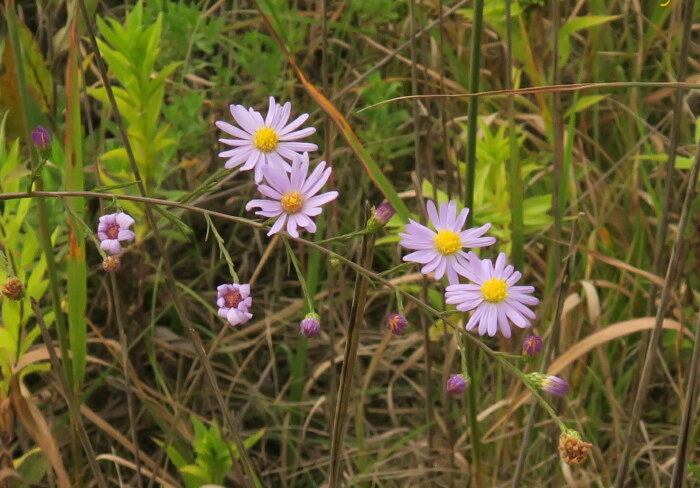
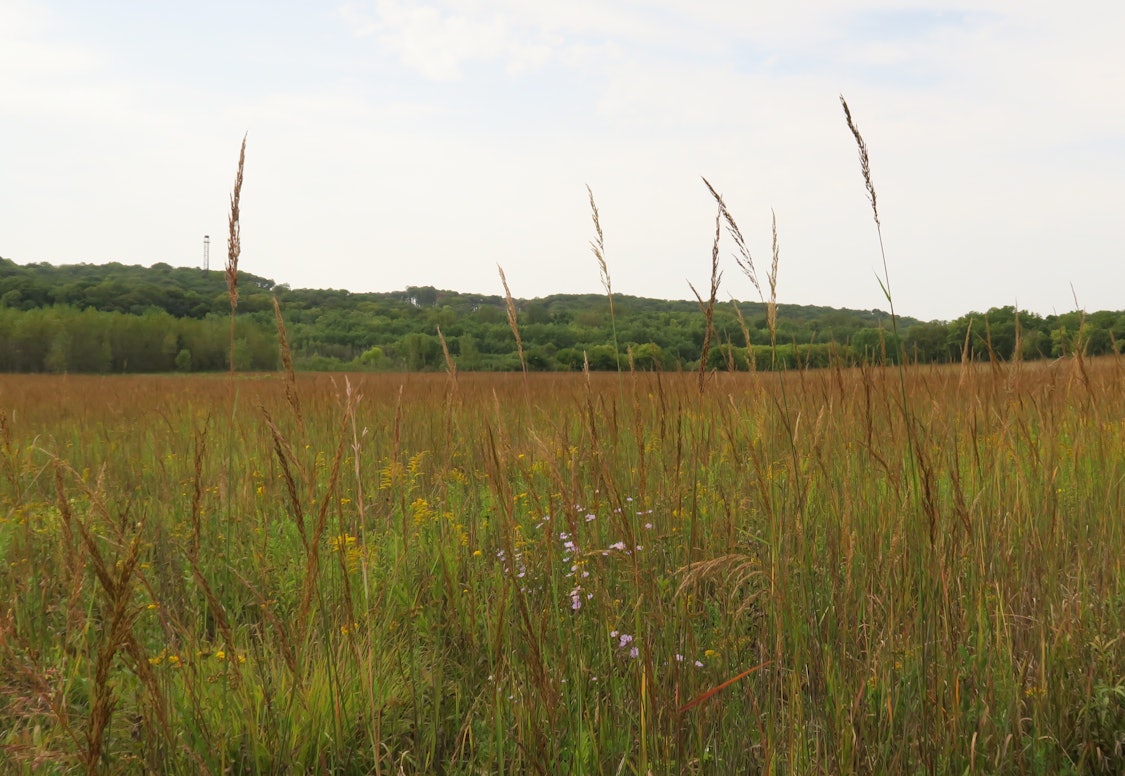
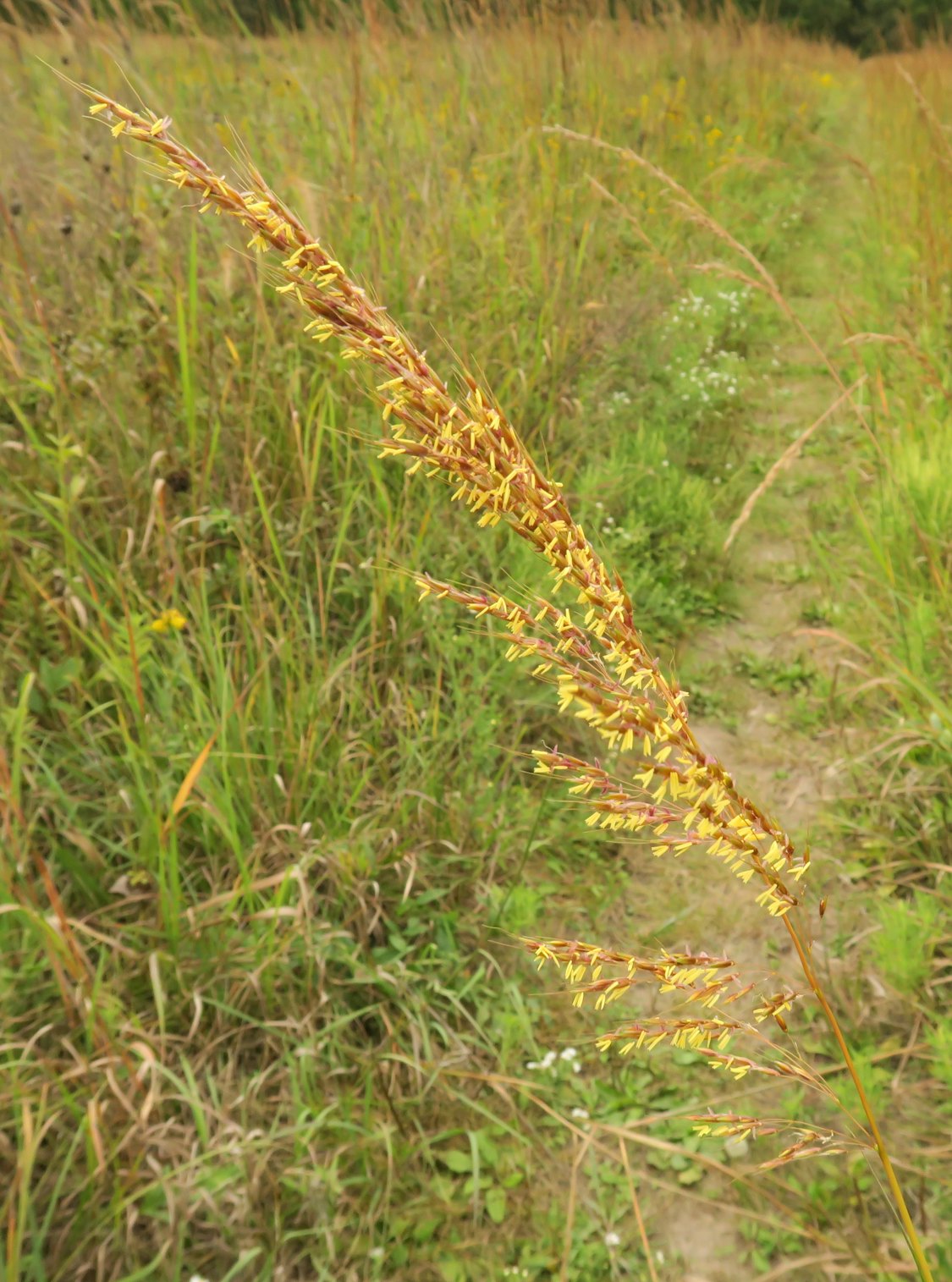
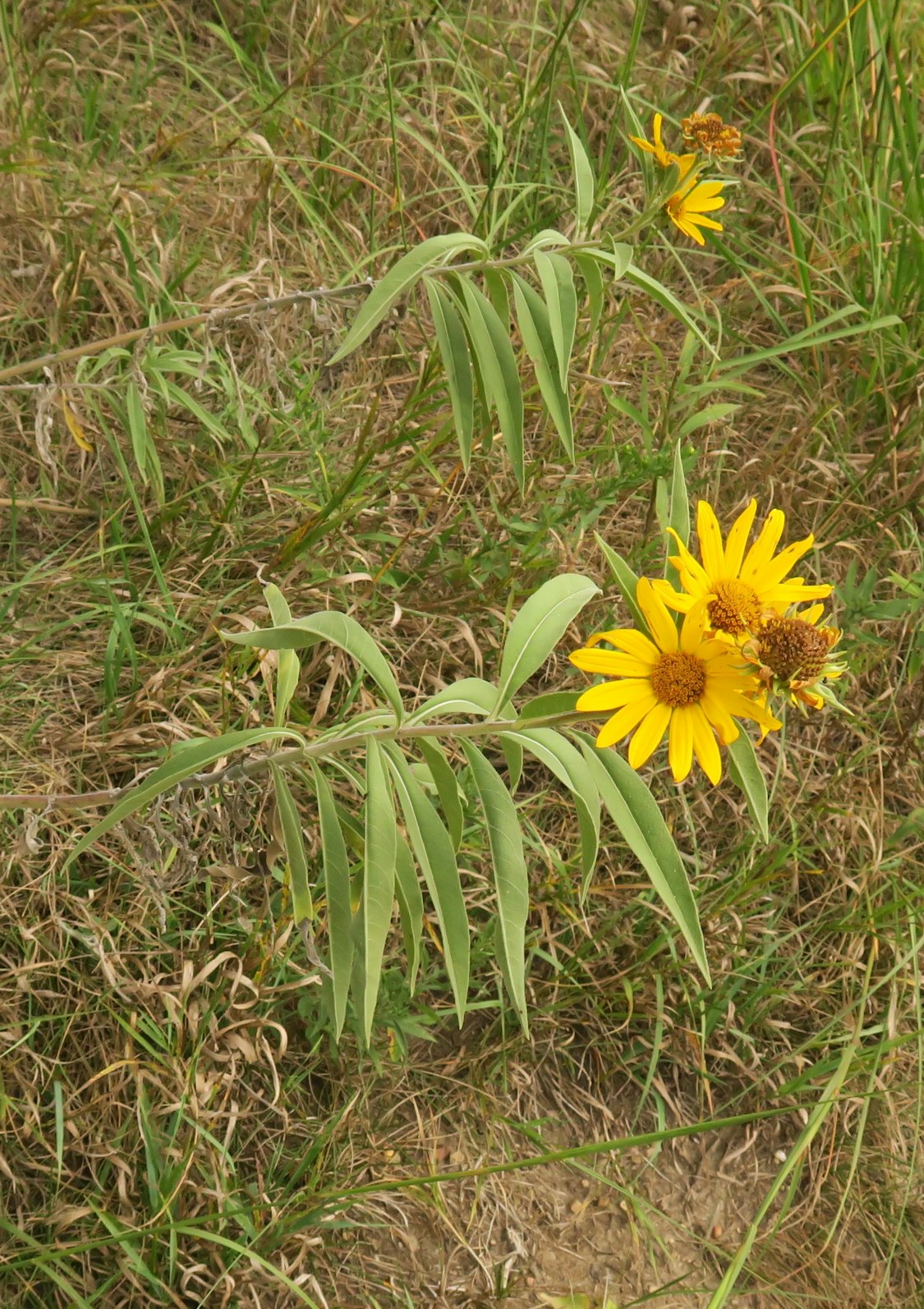
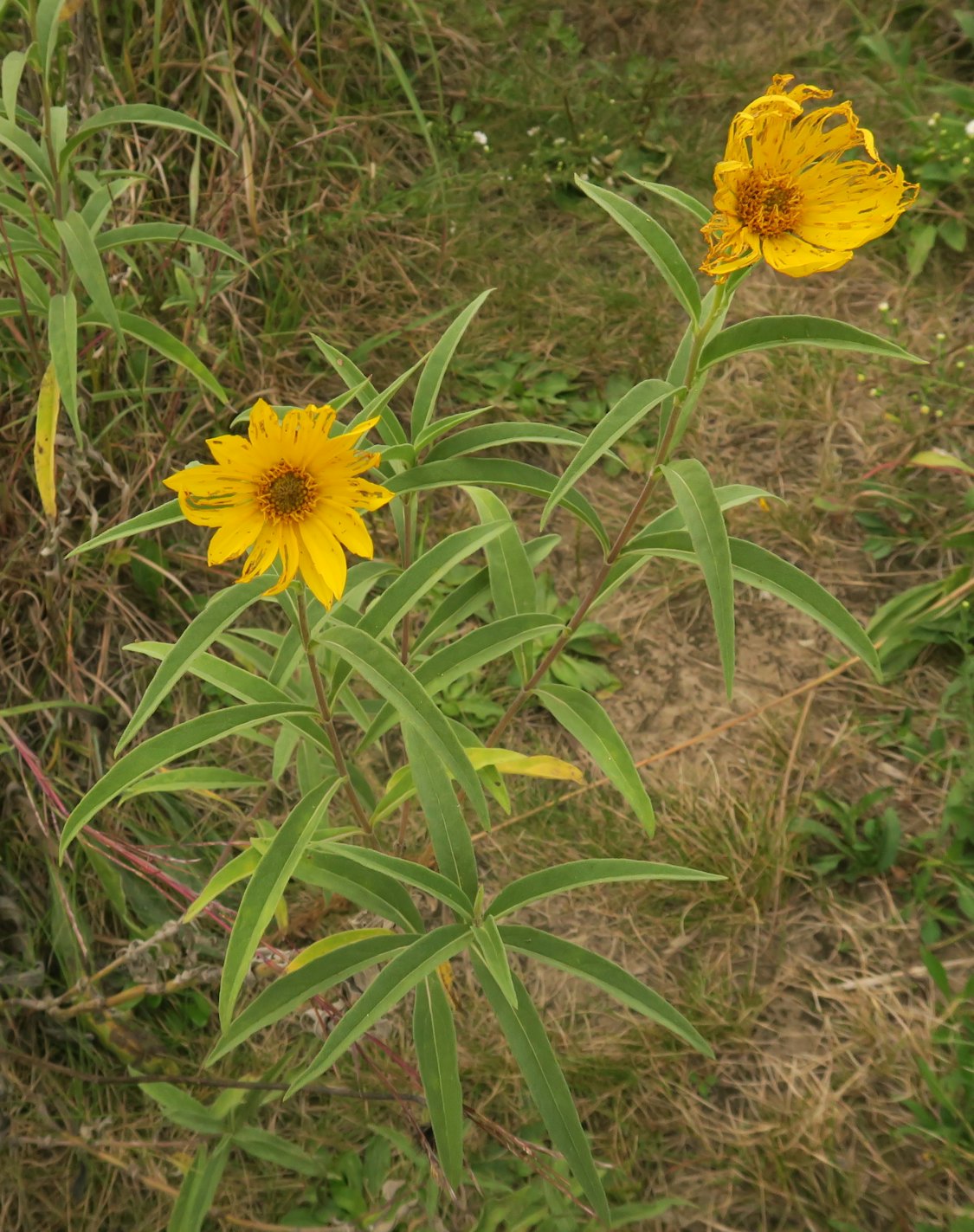



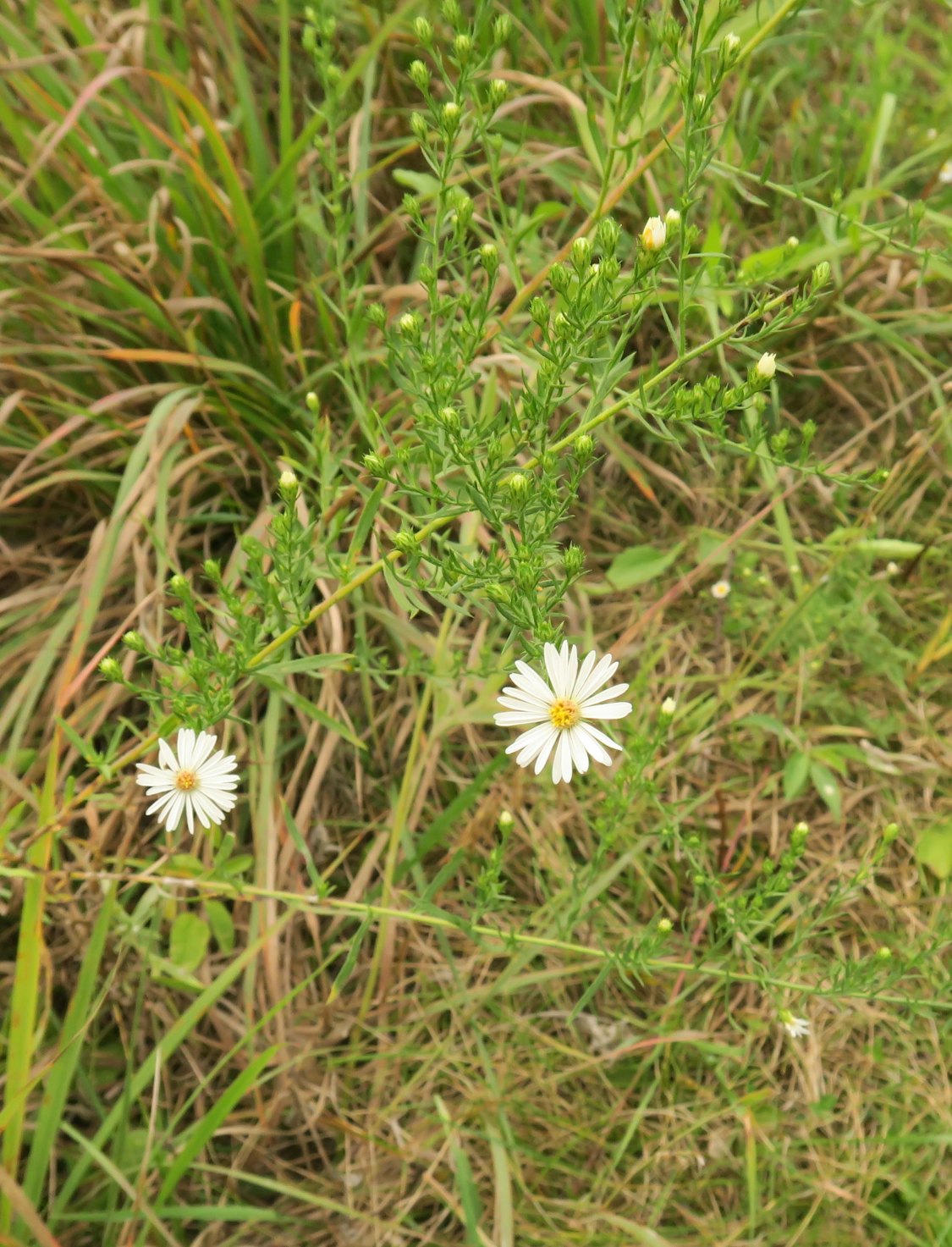



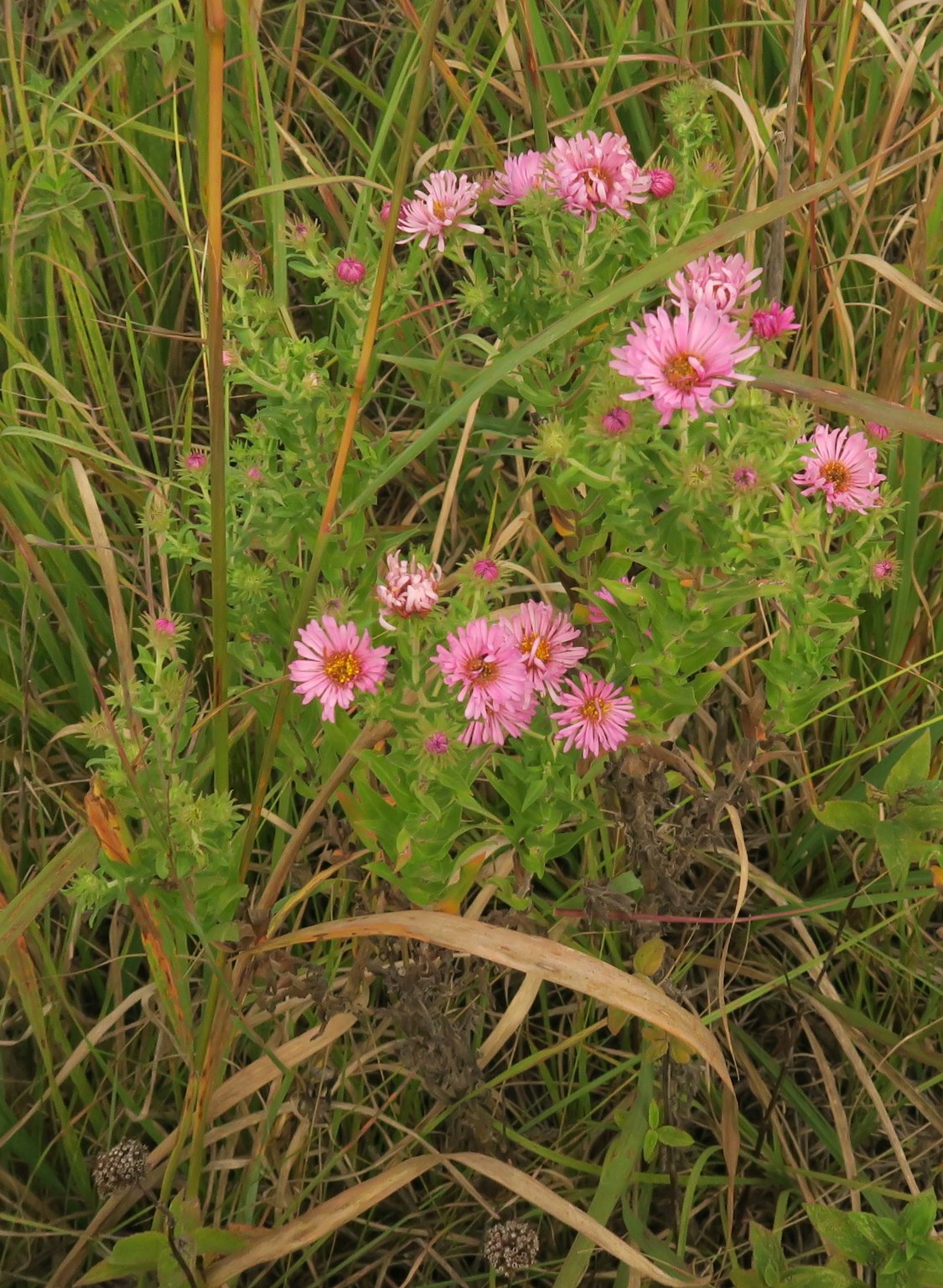

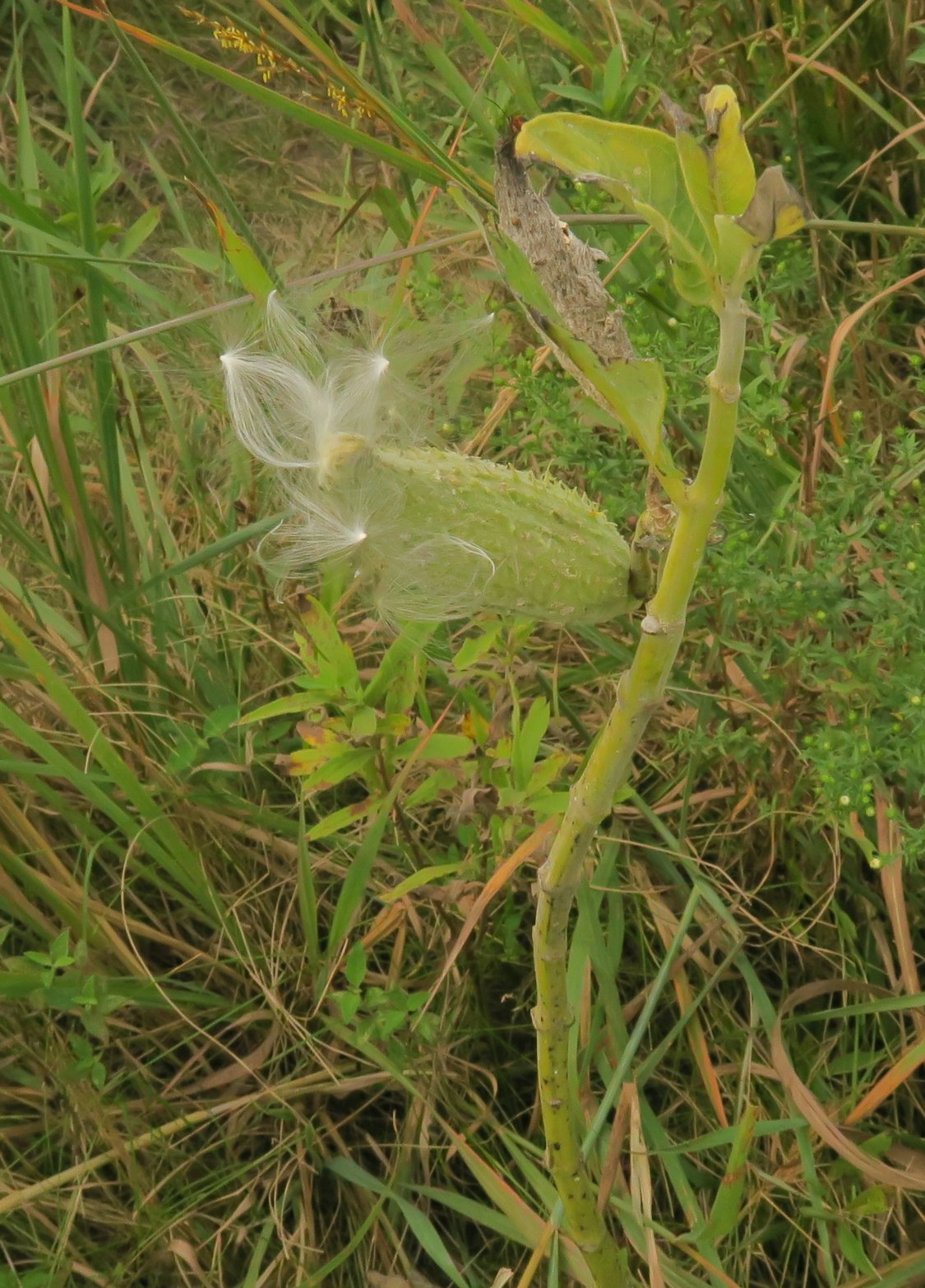
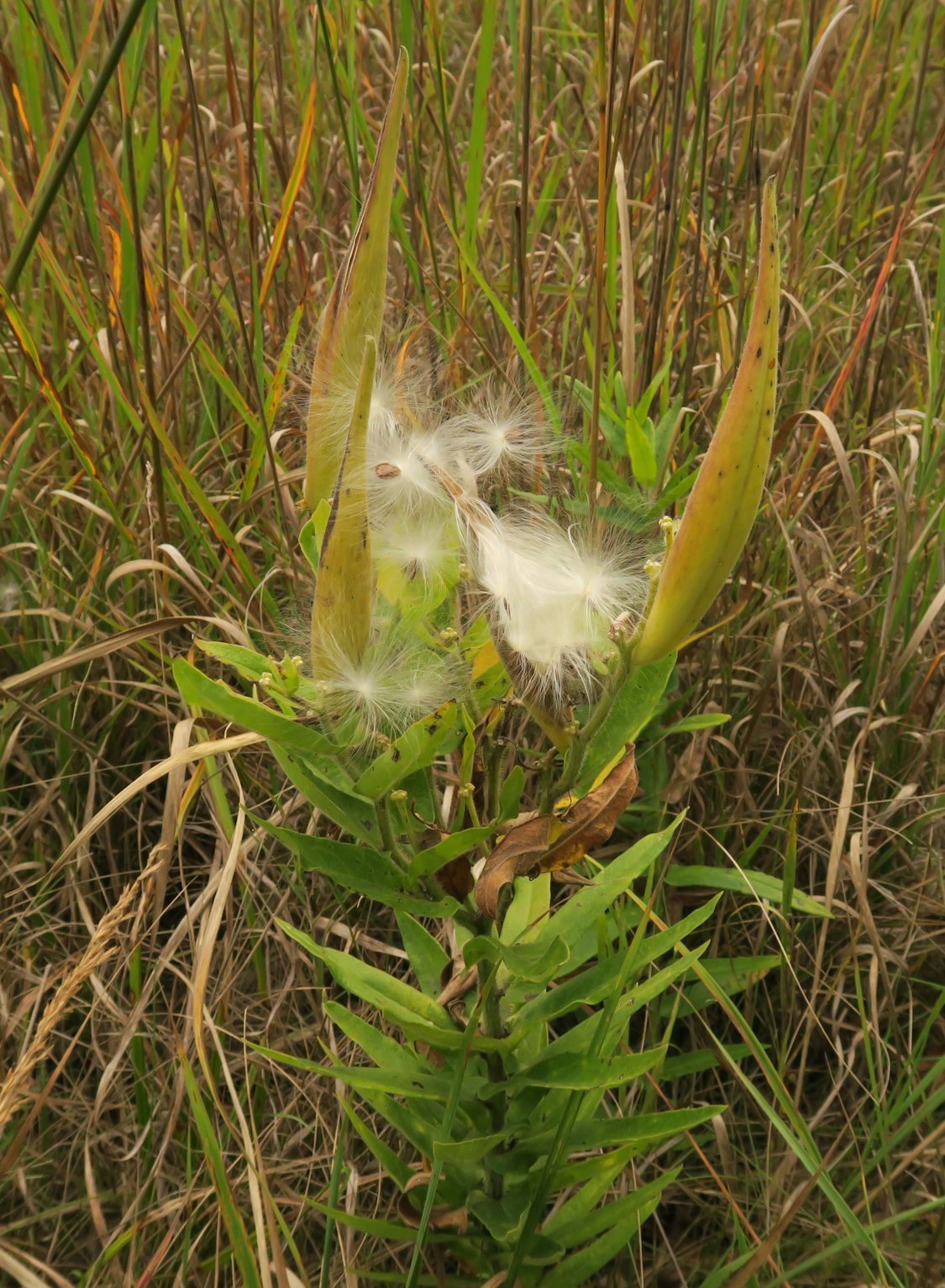
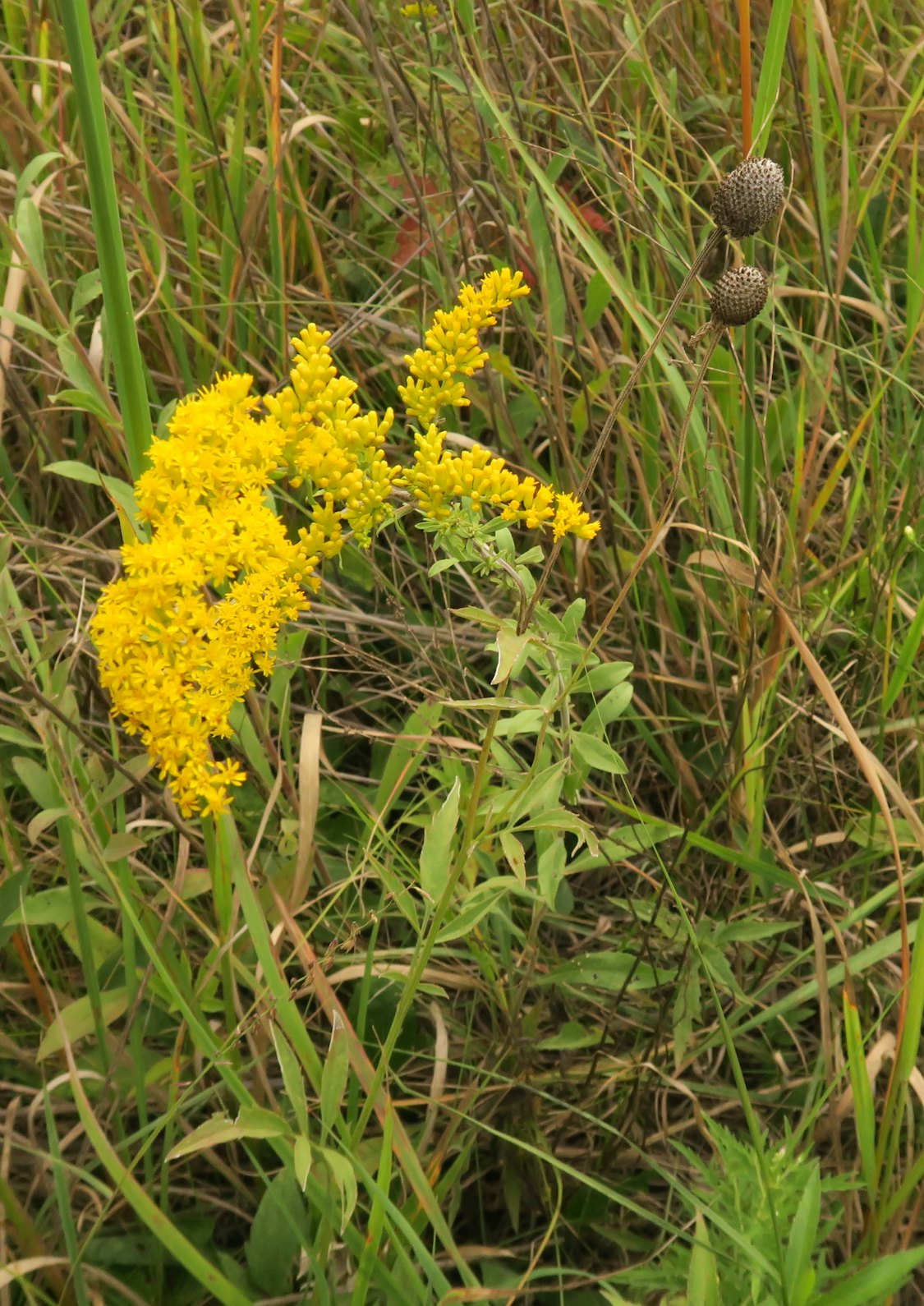
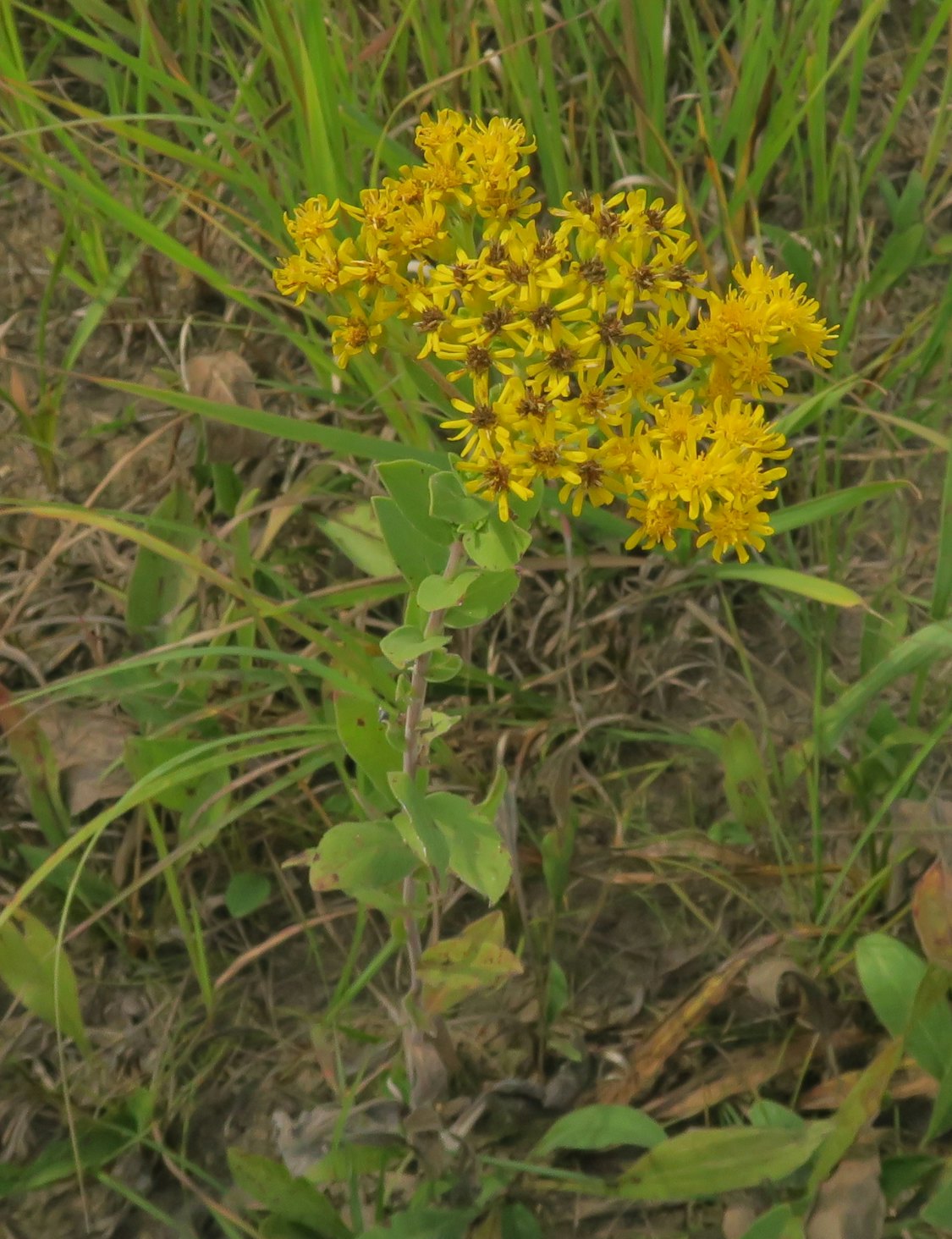
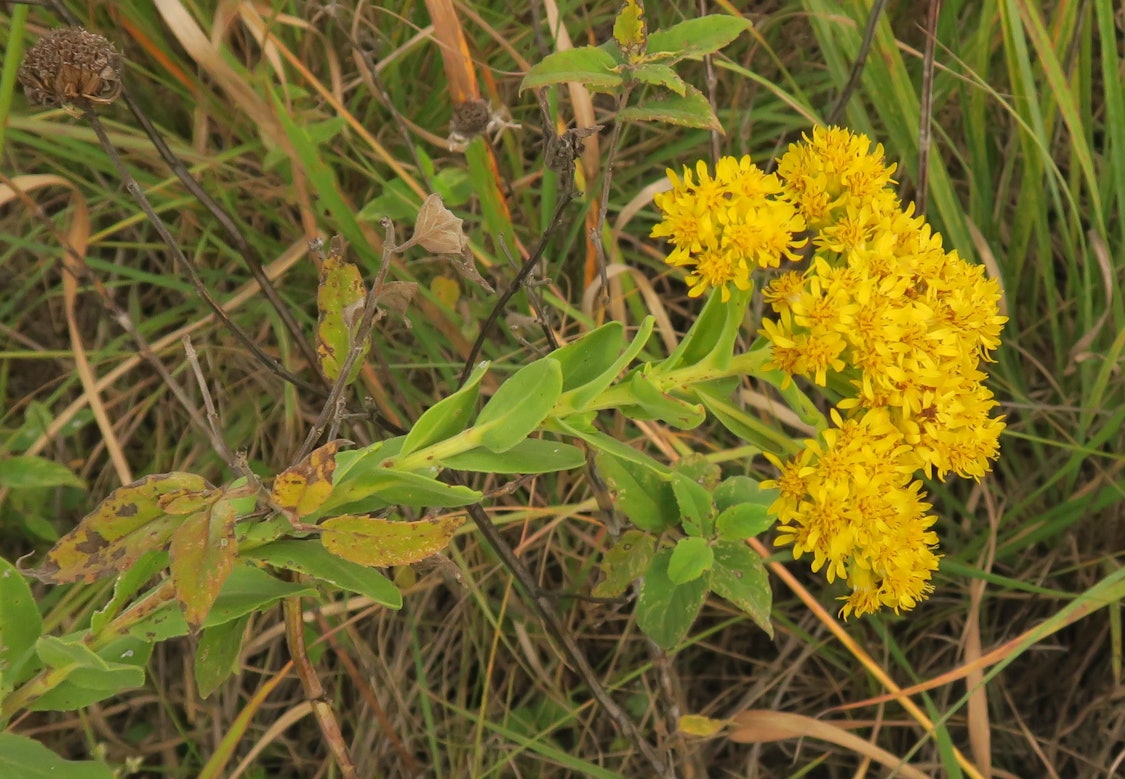

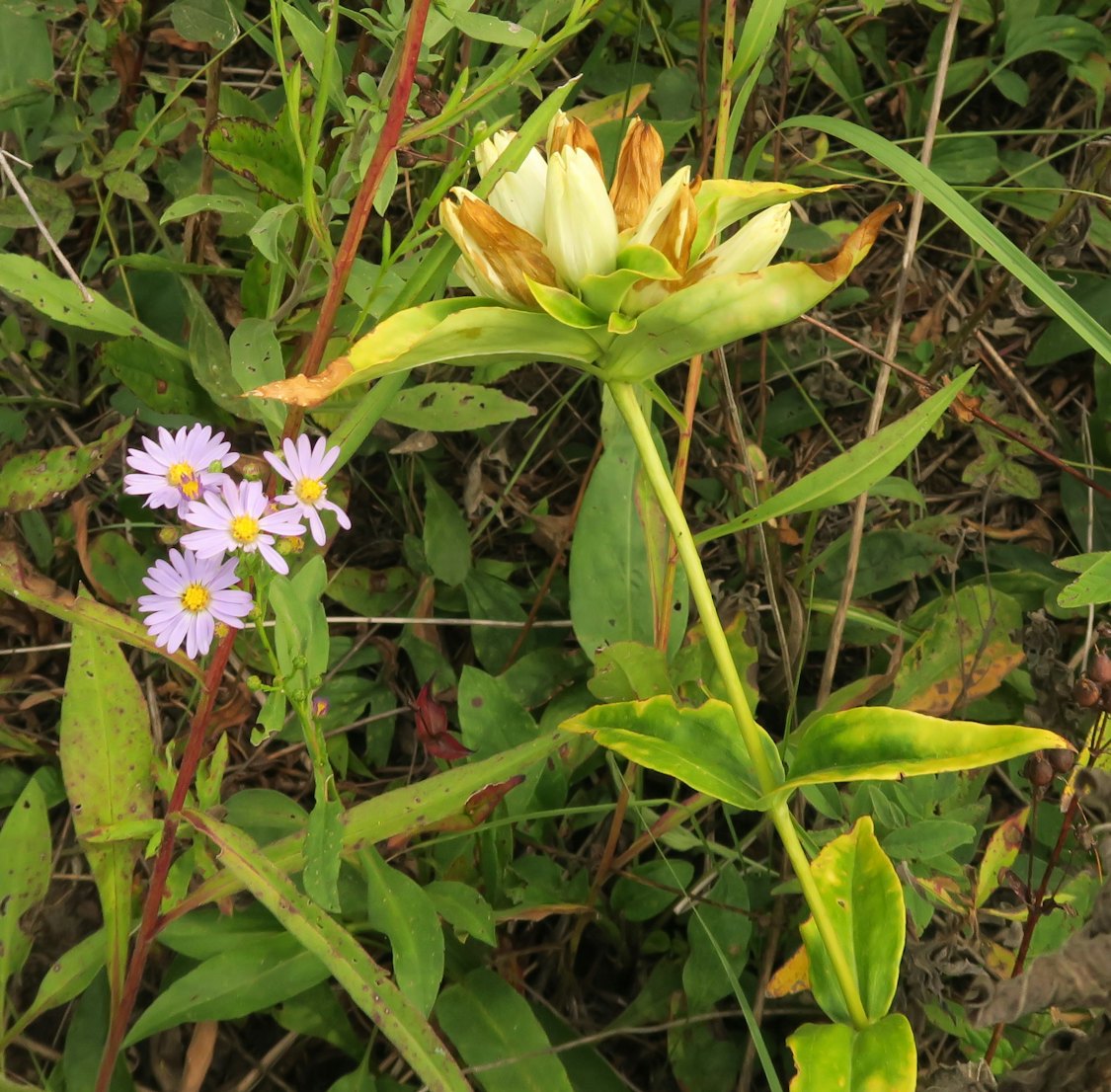
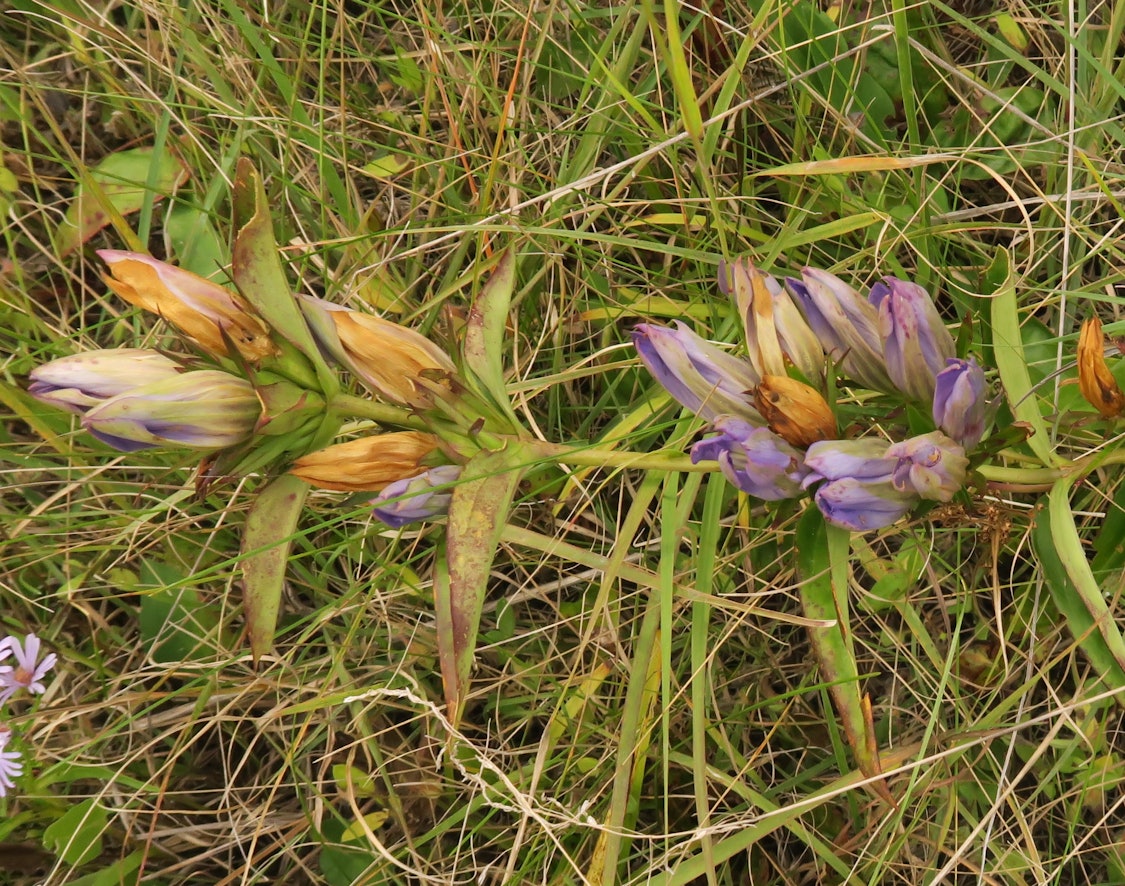
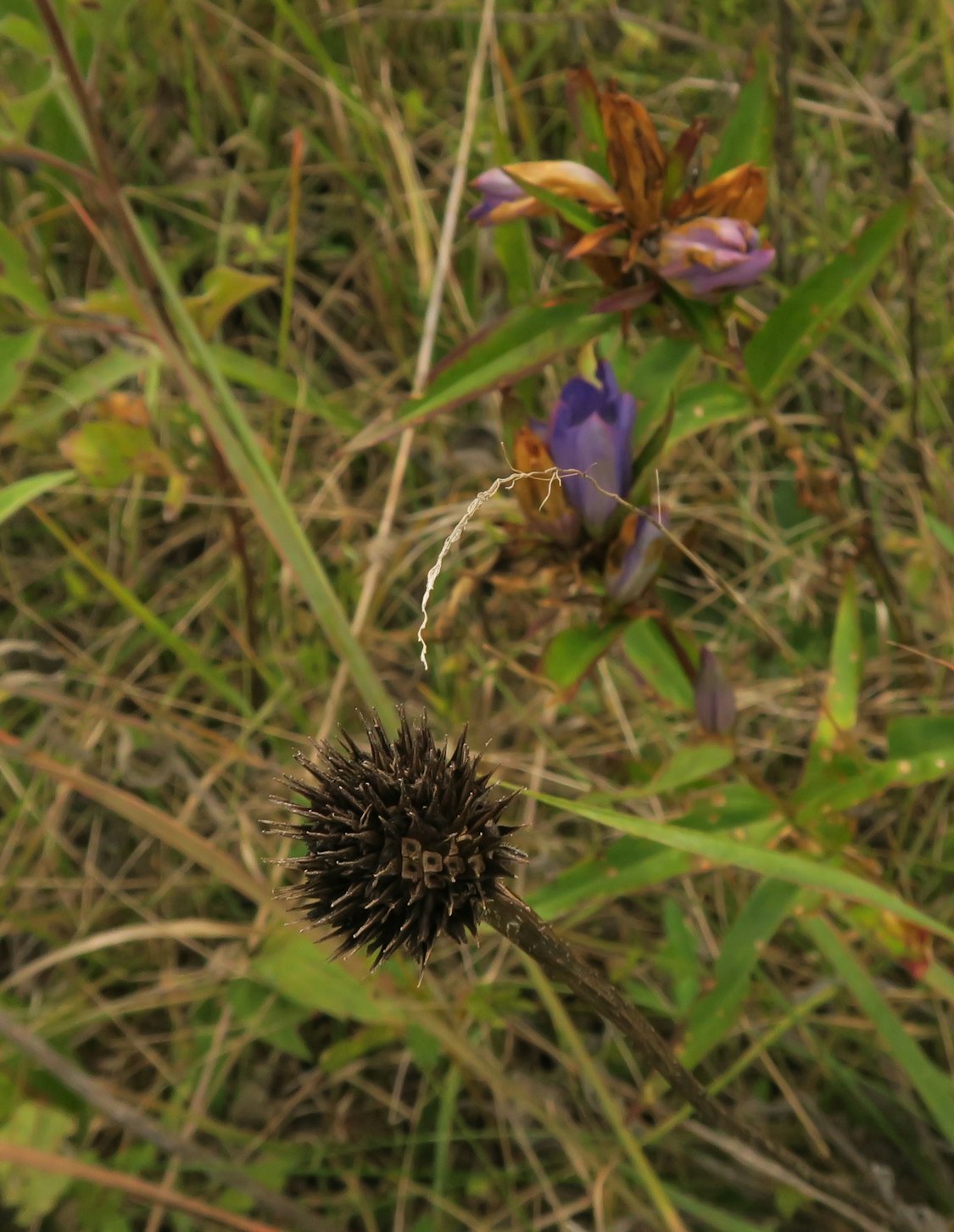
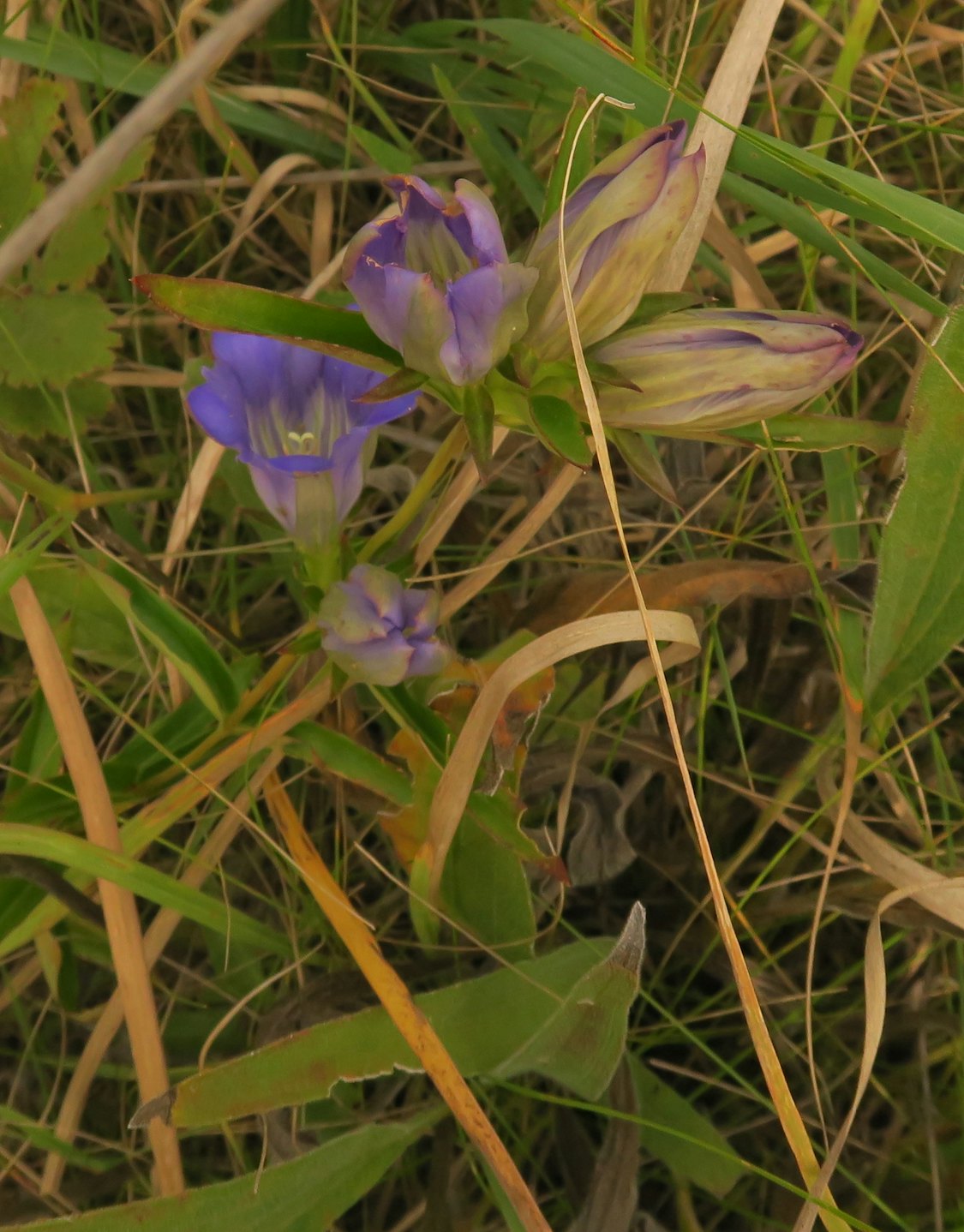
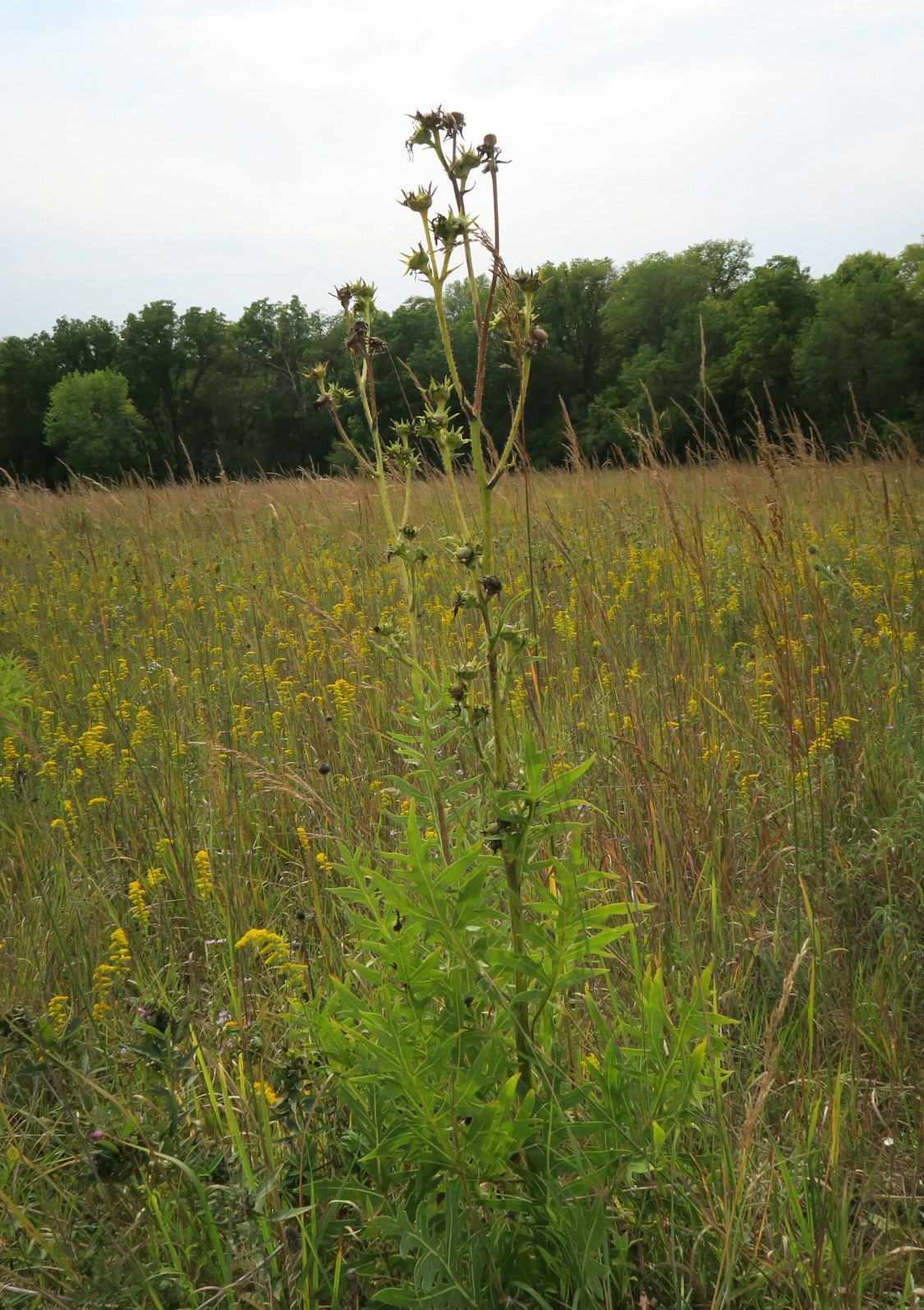

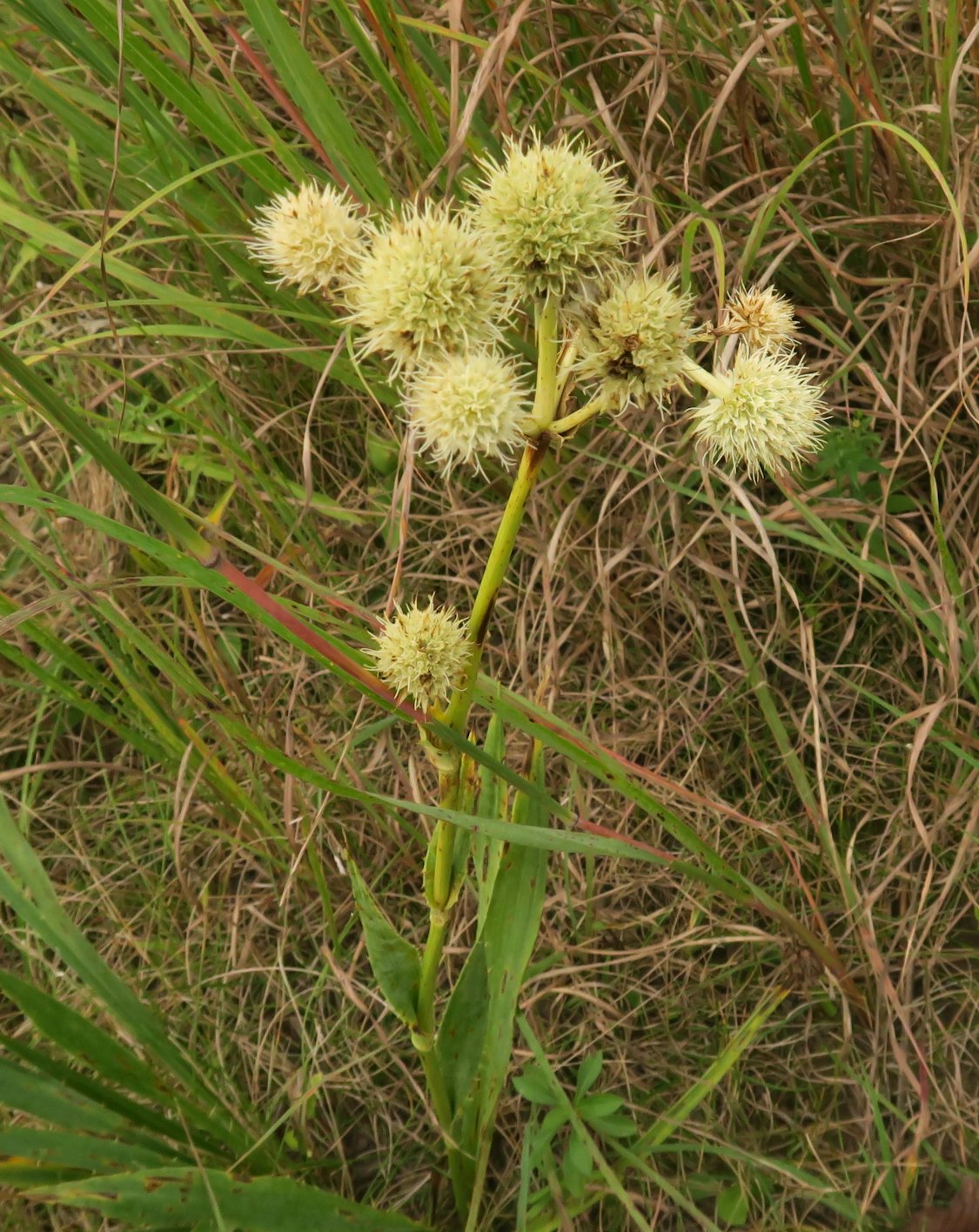
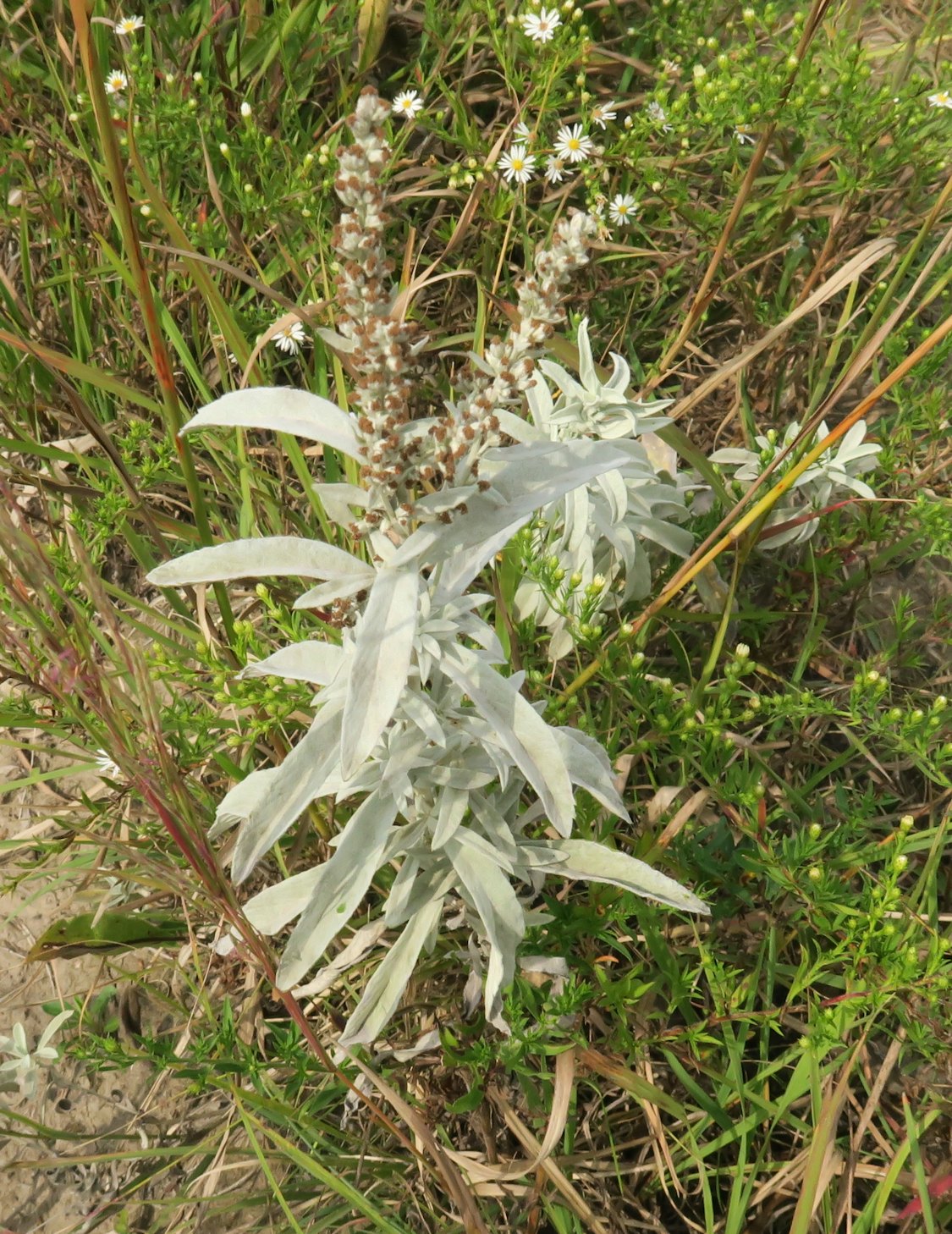
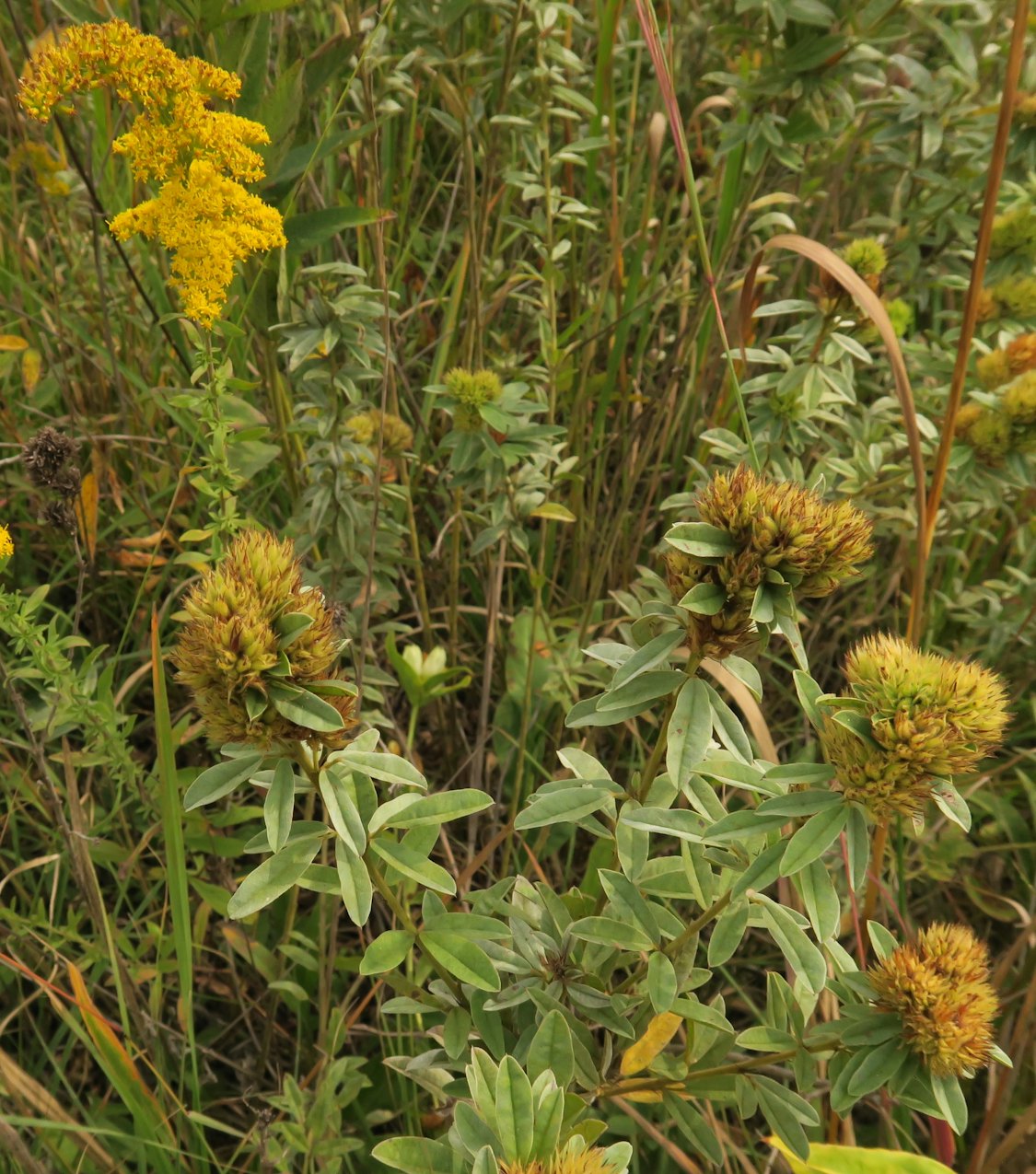
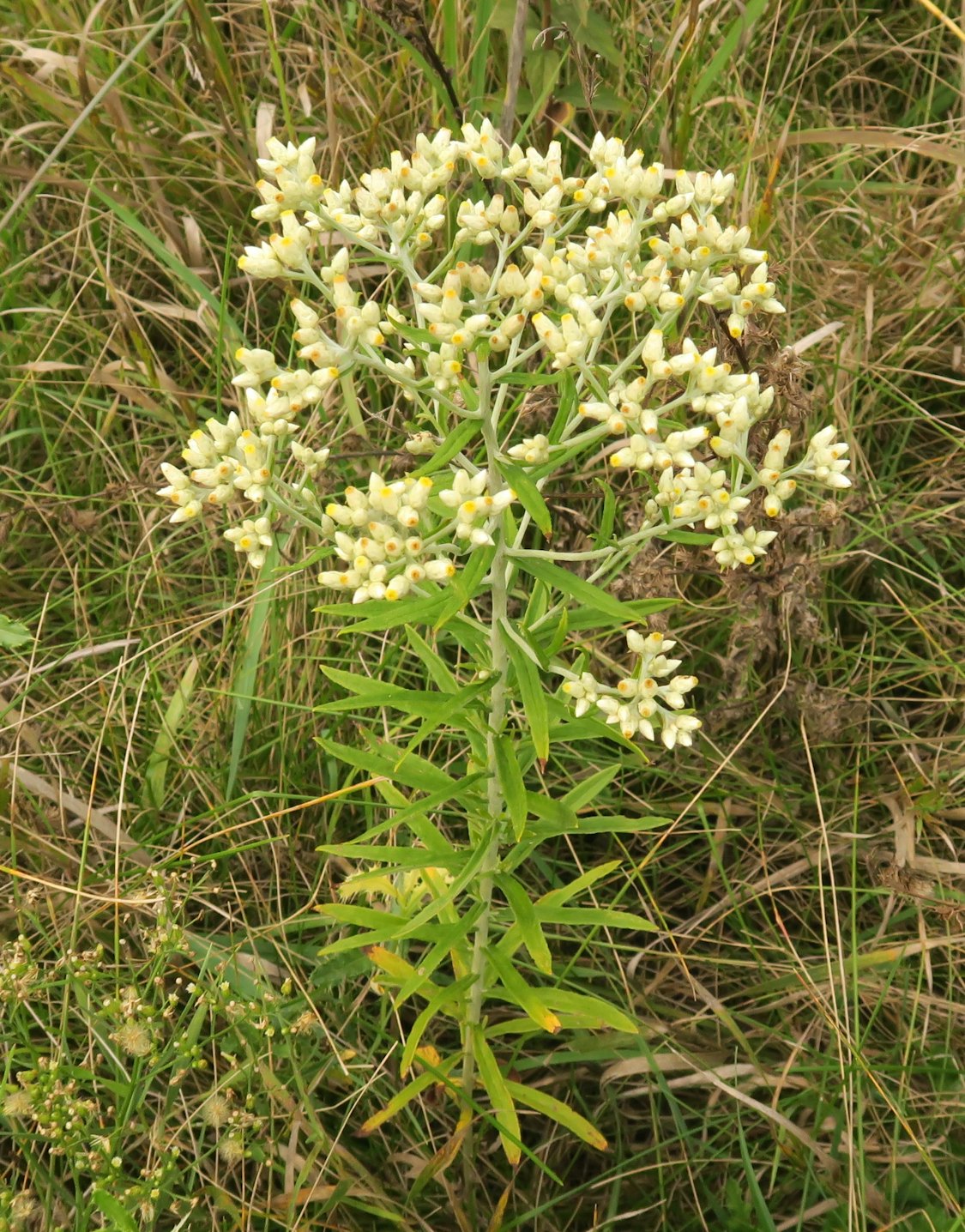


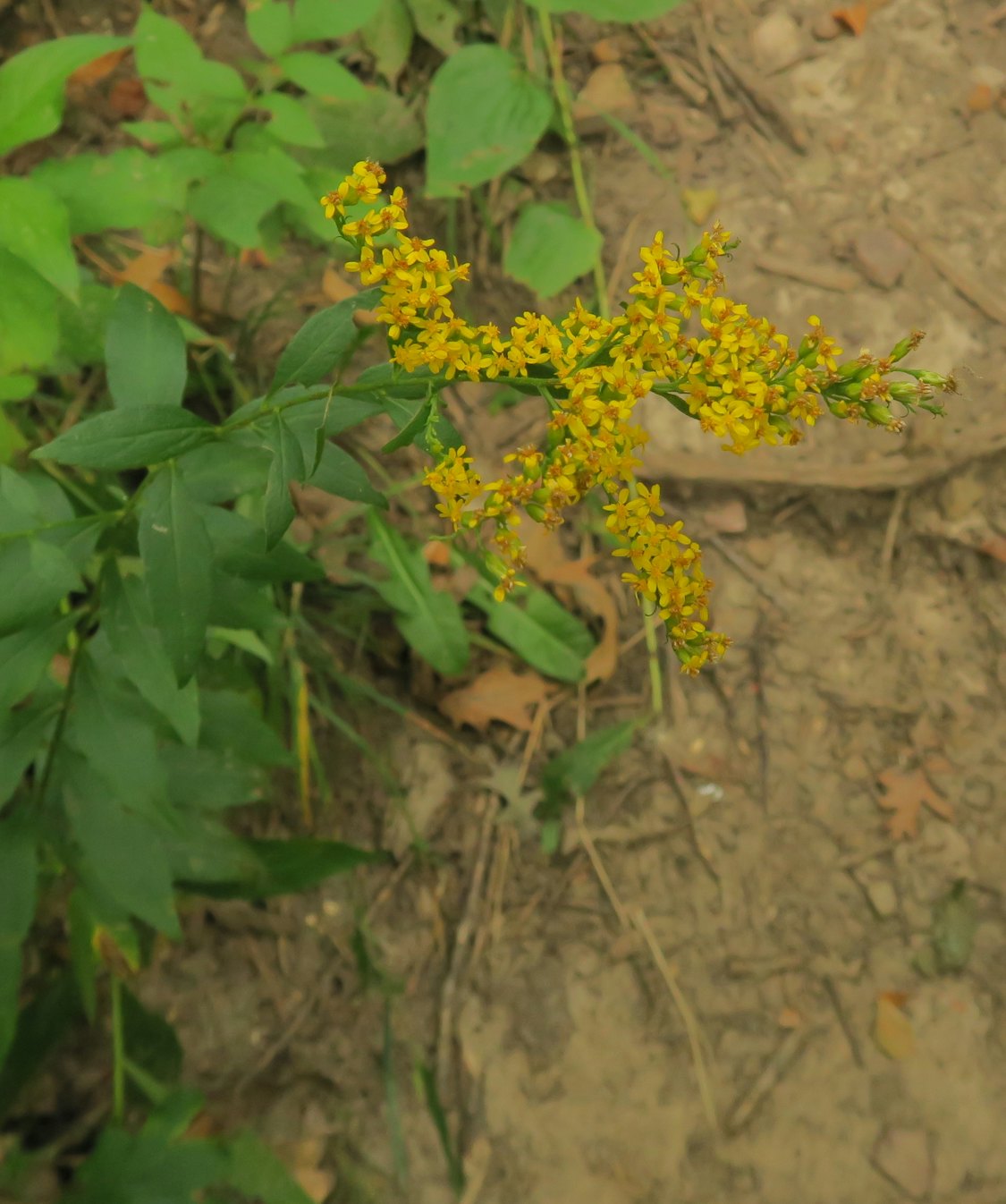
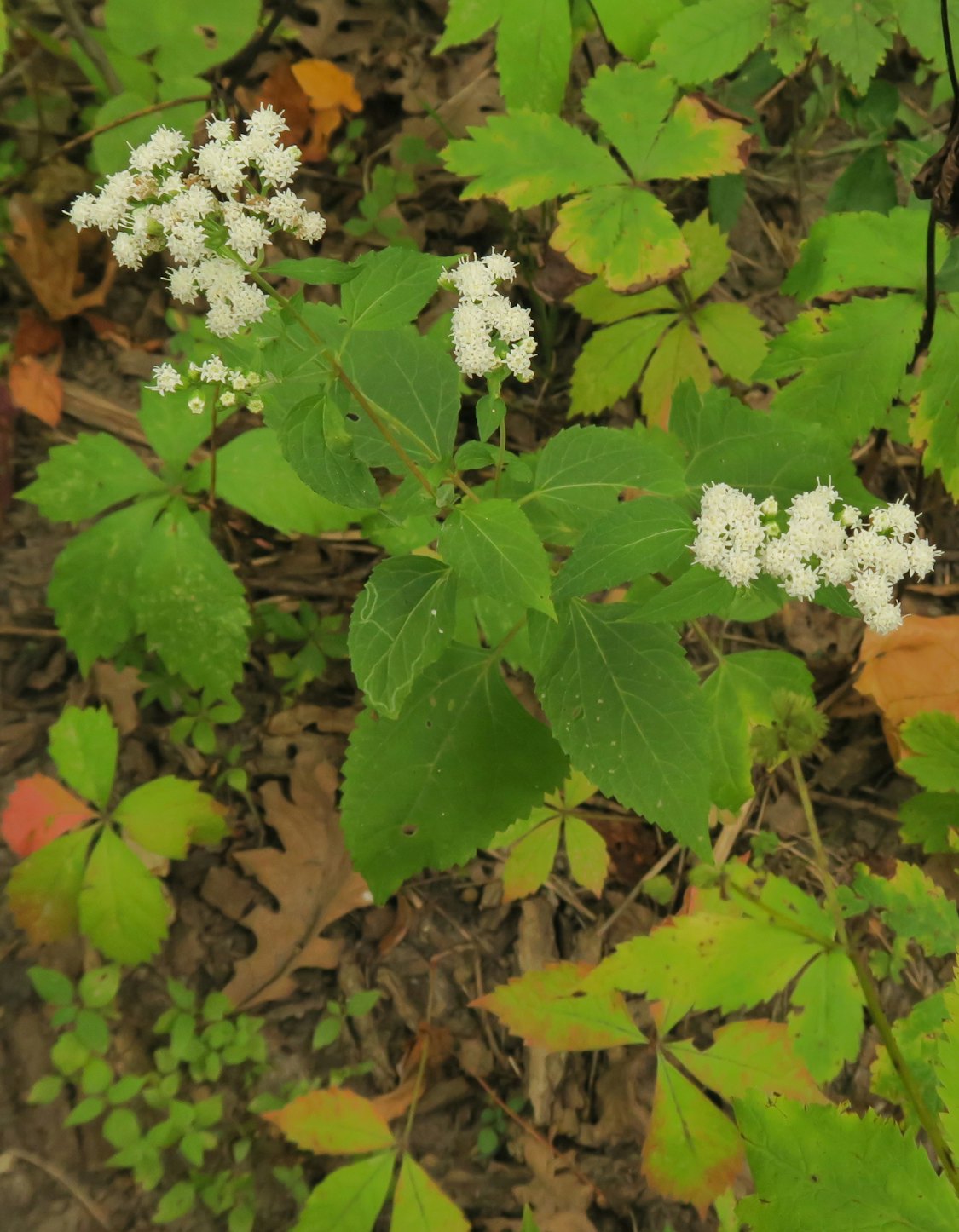

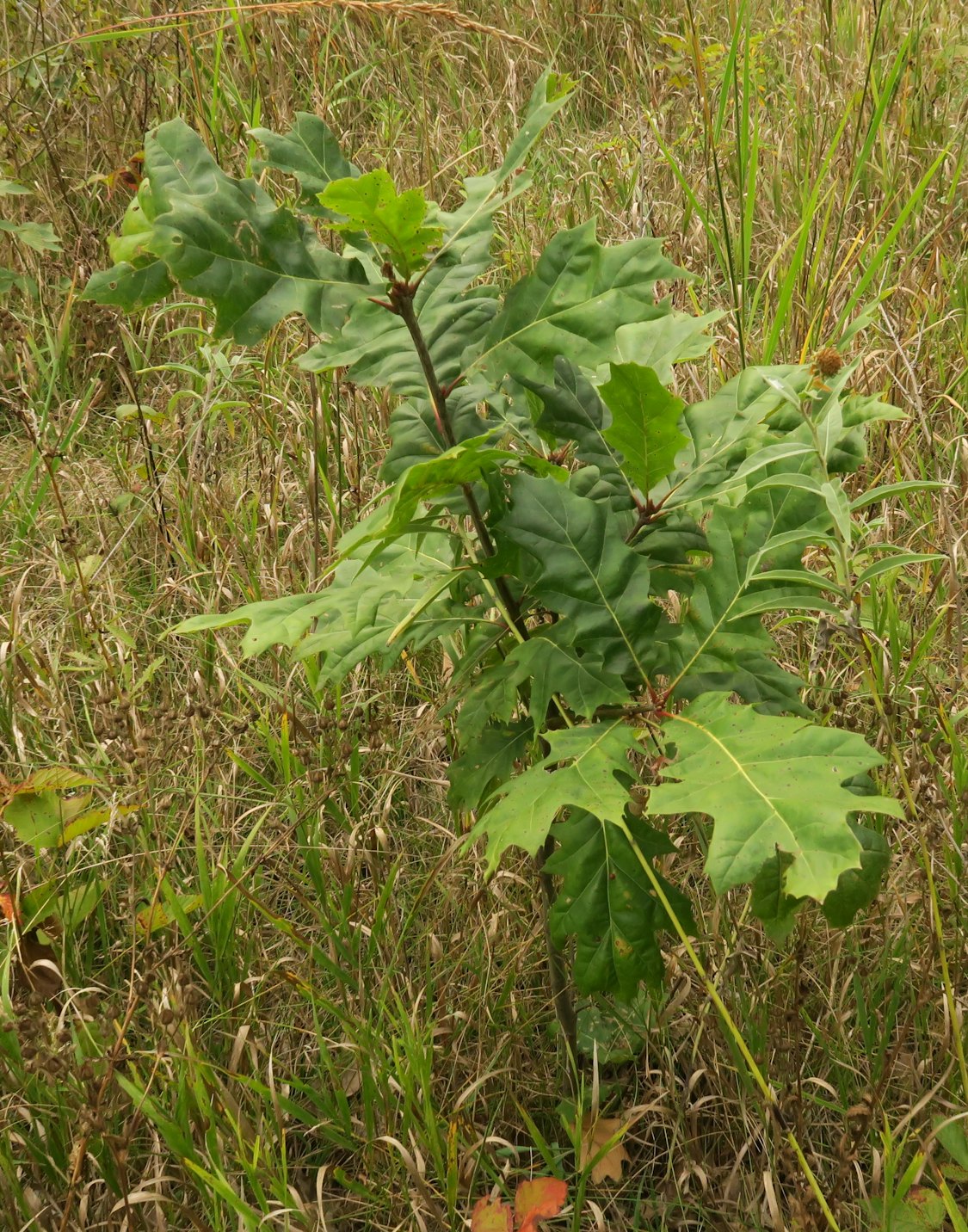
5 Comments
Wow, it's fun and impressive...
…to see downy gentian blooming in a planting, rather than on a remnant. I’ve rarely seen that. And I think the plant that is going to seed just below the sweet everlasting might be false boneset, Brickellia.
I agree that the yellow mystery flower looks like late-blooming ox-eye. In my experience, when ox-eye breaks off or is mowed off, it keeps trying to bloom and set seed right up through frost. And birds just love those square-topped black seeds.
In my area, most thistles in road ditches are either native thistles or the non-native Canada thistles. Unfortunately, the non-native musk thistle has really moved into my region over the past thirty years, and ends up in pastures and other fields, rather than ditches. But relentless whacking can control it.
Nice photos, thank you!
PrairieFan Thu 30 Sep 2:28 AM
I think you are right
about the false boneset. Mike does have some of these on his prairie.
Laura Belin Thu 30 Sep 8:00 AM
Delaney Prairie
Thanks Laura. This prairie project has been so very rewarding. I recommend it to anyone who controls piece of Iowa ground–especially if it was prairie ground. Regarding Laura’s post: Regarding the asters–I know I have a wide variety of New England Asters from light pink to purple. I believe I have some Sky Blue, Heath and Frost Asters. I am not sure about “Smooth.” The Ox eye have been blooming all year till now. The Goldenrods include: Stiff, Missouri, Showy, some new one from Tipton Prairie and the Elm Leaf in the woods. I had some Bottle Gentian two years ago. I think I lost it. The blue is Downey Gentian. Yes, Laura the Cream and Downey Gentians are taking off from the seed I collect and spread about. I thought I had Everylasting, but I think it may all be Cudweed.
The Boneset is the one that has gone to seed. The woodland white flower is Black Snake Root. I just read the Abraham Lincoln’s mother died of Milk Poisoning from their cow eating White Snake Root. Her parents also died from it. The oak seedlings are Bur Oaks. They may withstand the fire next time I burn. If they do–fine. Most everything else that does not belong in my prairie will die or get knocked back. The thistle is native thistle. Turn the leaf over. If it is white it is native and not invasive. The migrating Monarchs love it. Corrections welcome. We are all learning. (Well, maybe not Tom Rosburg 🙂
medelaney Thu 30 Sep 9:36 PM
I think Tom Rosburg would likely say he is still learning...
…but what he learns these days is added to the top of a huge hill of knowledge. Most of our hills are much smaller:-).
The beautiful little oak in the photo has pointed leaves, so my guess is Northern Red Oak or maybe Black Oak. It’s nice to see a little oak not bitten off by deer. The woodland white flower looks possibly like white snakeroot to me because of the wide leaves.
The milk-sickness deaths in the Lincoln family are a grim historical reminder that land abuse in the U.S. has a very long history. Cattle do not eat white snakeroot
unless they are severely hungry. EuroAmerican settlers often put more cattle on their land than the land could really support, especially during drought. The results could be awful for the land, the cattle, and the settlers.
PrairieFan Mon 4 Oct 8:52 PM
Connie
Loved this walk..our son has about 80 acres of prairie and pollinators on his farm where we live. Come visit sometime!
birminghan1@aol.com Fri 1 Oct 7:20 AM